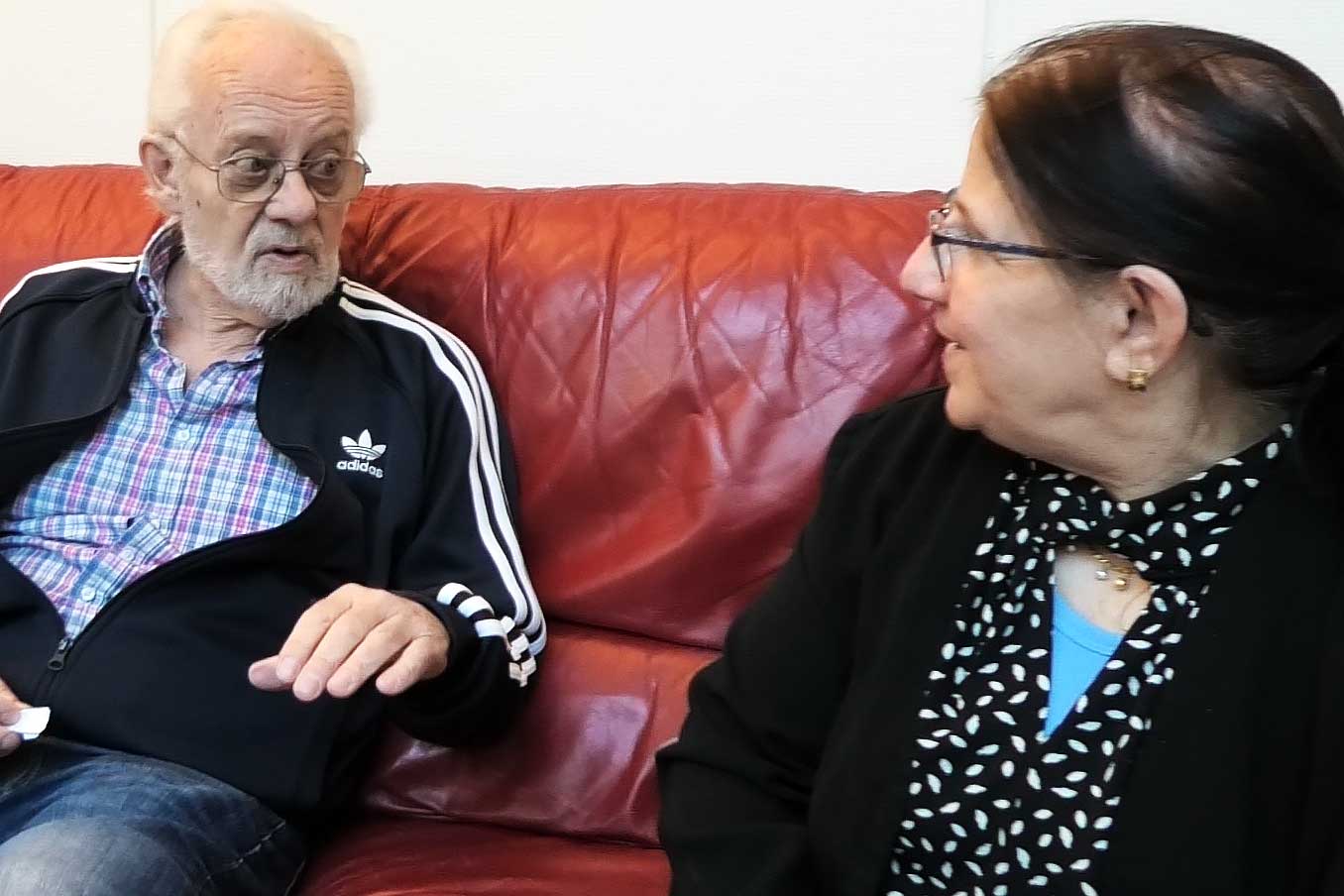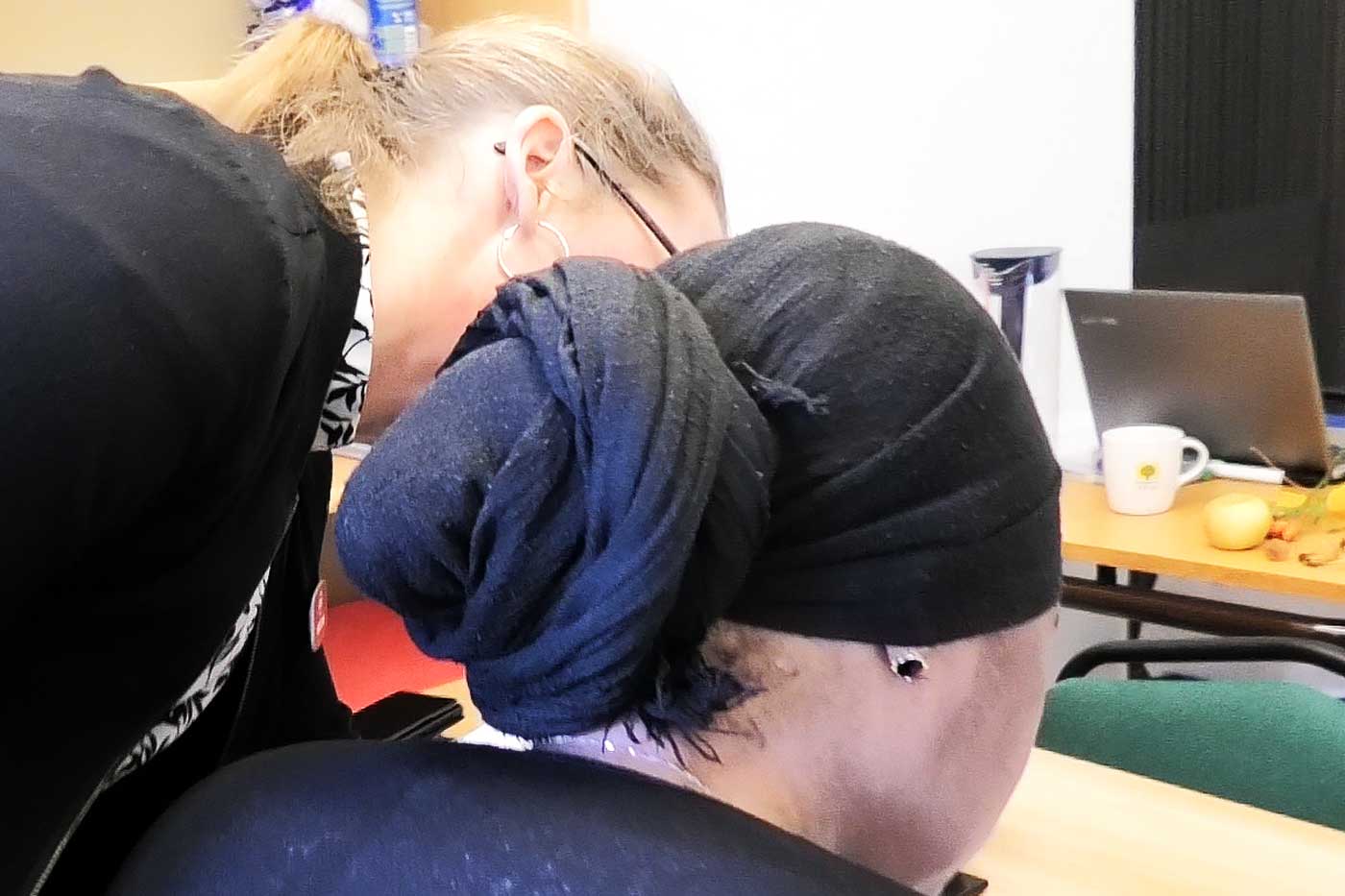Foreign-born women with a low level of education are given the opportunity to study. They learn Swedish and about what they need to do to get a job. By studying, they also become role models for their children.
ABF Örebro County
Örebro, Sweden
Purpose of the method
The aim is to welcome foreign-born women, strengthen their position in relation to the labour market and improve their understanding of Swedish society.
Background
The initiative for this activity initially came from associations on the Vivalla Estate in Örebro. ABF Örebro County has a wide contact network on the estate, both among residents and associations. There was a desire for ABF to assist women to start their own businesses, given that many women were trapped in long-term unemployment. Most of them had lived in Sweden for a long time, anything from three to thirty years. The majority had been here for at least a decade. ABF was requested to set up a resource centre on the estate, which became the Trappan Resource Centre.
The idea developed into a three-year project aimed at welcoming women from many cultures and strengthening their position on the labour market. The project received support from the European Social Fund (ESF).

Description of method
The Swedish Public Employment Service refers women to the Trappan Resource Centre as an activity within their job and development guarantee. Many of the participants have a low level of education, or none whatsoever, from their previous homelands.
Participants arrive throughout the year and the project is run in two-week periods, each with its own theme. When the theme is social studies, the content is pitched at upper-secondary level, although teaching methods are at primary school level. This is because the participants have difficulty processing long texts. They also have lessons on the Swedish language with a licensed Swedish-language teacher and all teaching in the classroom is conducted in Swedish. Social studies courses are led by the project manager and two staff members, one an Arabic speaker and one Somali.
Intensive literacy courses are also held at the Trappan Resource Centre, with participants working in small groups using an ABC book designed for primary school pupils. This course is led by a retired teacher. Participants attend the centre for between six months and a year. After six months, an evaluation is conducted together with the Swedish Public Employment Service and the participant to assess whether the participant: is developing through the activity; is ready enter the labour market; should move on to adult education; or should continue at Trappan.
Almost all of those who arrive at the Trappan Resource Centre have failed Swedish for Immigrants (SFI). The project manager meets all prospective participants in person before they are registered at Trappan in order to explain how the resource centre works, what ABF can do for them and what they can expect if they join the project.
When the participants begin their first course they are given a few days to settle in, after which they have an individual discussion. Each participant has a contact person with whom they will have an individual discussion once a month. One important element of the program is to provide knowledge and understanding of the job-seeking process. The themed course Labour Market and Jobs offers participants knowledge of this process, including how to right a CV and cover letter. If necessary, participants are also helped to create an email address.
It is important to be clear with regard to the job-seeking process, given that many participants have an erroneous image of, for example, the Swedish Public Employment Service, which some believe both searches for jobs on behalf of the unemployed and decides who gets jobs. There are also many who do not understand job advertisements and participants are therefore provided with knowledge of various professions and what is required in order to get a job.
In order to ensure that the participants get as much practice as possible at speaking Swedish, volunteers visit the centre for a couple of hours each week to converse with the participants in Swedish. These volunteers include pensioners, students and members of ABF’s study circles. Information regarding the project was emailed to circle leaders who passed the information on to their own participants. Some people have even contacted the project manager to offer their assistance after hearing that ABF had opened the Trappan Resource Centre. Örebro University also contacted ABF to offer support from student teachers. The project has also used Facebook to disseminate knowledge of the project.
To bring them closer to the labour market, participants are sent on workplace visits or work placements to companies, organisations and municipalities. This can be anything from learning how to commute to and from work and how to present oneself to training at companies who need additional staff and where future employment is a possibility. Project employees are extremely active in contacting prospective employers and the Trappen Resource Centre has approximately 100 companies and organisations that accept trainees with varying degrees of frequency. The women in the project are also able to use the facilities at the Friskis & Svettis gym to improve their health and increase their physical strength while participating in a social context.

Results
Sixty people have participated in the project. Their language skills have improved as has their self-confidence. Above all, they have discovered that they can learn new things. Once teaching is conducted at a pace that suits them, they become aware of how their learning process works. They learn in the same way as children in Swedish primary and middle schools. Many of the women have previously attended courses at which the pace of teaching has been too fast, something that has created a sense that they are somehow stupid and unable to understand anything. Trappan Resource Centre engenders a sense of pride when they realize that they are capable of learning. They have an aha moment when they crack the learning code.
The participants’ increased self-confidence and sense of belonging also impacts on relationships at home. They become role models for their children; many of them had never considered that there were leisure activities that allow mothers to take their schooling seriously. This demonstrates the importance of going to school to children, and that they should take their own schooling seriously.
Study materials
The project develops its own study materials to suit the needs of participants. These can be PowerPoint presentations with images or reading and listening exercises. Use is also made of sites containing video material; for example, the Swedish Educational Broadcasting Company (UR) website.
Collaboration
- The Swedish Public Employment Service
- Örebro Municipality
- Kulturföreningen Afrikas Horn (Horn of Africa Cultural Association)
- ÖrebroBostäder AB
- Örebro University
- Friskis & Svettis
The Trappen Resource Centre also collaborates with a large number of organisations, associations, companies and Örebro Municipality to provide work placements.
Resources and funding
Grants from the European Social Fund and co-financing from the Swedish Public Employment Service and ABF Örebro County.
Contact
If you have any questions about the method, please contact ABF Örebro County.